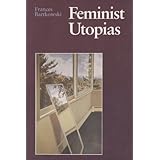 |
Through a series
of short stories, Gearheart tells the stories of the Hill Women. The Hill Women
live in serene world, communing with nature at every turn. Their world seems to
have reached the apex of peaceful living, until the reader learns why the women
live in the forests: they are forced to. Men have taken over the cities, and
control every facet of a woman’s life. The women that rebelled fled the cities
and learned to live among the trees and animals. In doing so, they developed
psychic abilities, like “speaking” with animals, astral projection, and
telepathy to name a few.
While the
comparisons between the Hill Women and Gilman’s Herlanders are strong,
Gearheart brings realism to the Hill Women by depicting them in the throes of
irrational, or even violent fits of anger. One thing which seems to be
reiterated in feminist utopian fiction novels is the lack of physical violence in
women, but Gearheart is not afraid to admit her peaceful characters are still
human, and within their range of human emotions, anger can be counted among
them. Russ and Tepper bring similar elements to their female characters in The Female Man and The Shore of Women. In both novels, the female characters are part
of war-less societies, but they are still capable of individual acts of
violence.
Gearheart,
Sally. The Wanderground: Stories of Hill
Women. New York: Alyson Books, 1978. Print.
Picture linked from:
http://www.amazon.com/The-Wanderground-Sally-Miller-Gearhart-ebook/dp/B009XIDI4K
http://www.amazon.com/The-Wanderground-Sally-Miller-Gearhart-ebook/dp/B009XIDI4K

